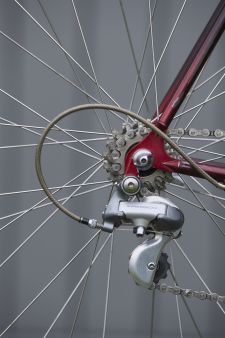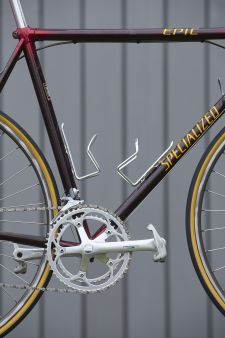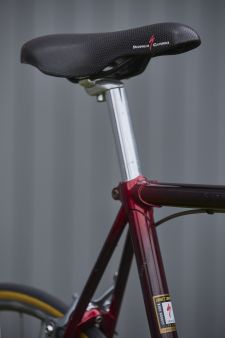Toe Clips, Crashes, Frame-Mounted Shifters, and Cotton Jerseys? Jan Svorada Has Experienced It All
Steel frames. Toe clips with leather straps. Five-speed cassettes with gear ratios that boggle the mind today. Shifters mounted on the frame. Cables high above the handlebars. Helmets padded with foam... Anyone who rode or raced a bike in this era is a hero. Just like Ján Svorada, who became a hero for many by winning the Peace Race and later stage victories in all the Grand Tours!
L’Etape Czech Republic honors all heroes of cycling history with the Heroes category, whose ambassador is the Czech cycling hero of the turn of the millennium, having claimed five wins at the Giro, three at the Tour de France, the Vuelta, Tour de Romandie, and the Tour of Catalonia. On June 15, he will tackle the Short Route of the Hilly Stage like dozens of others on a bicycle assembled no later than 1993.
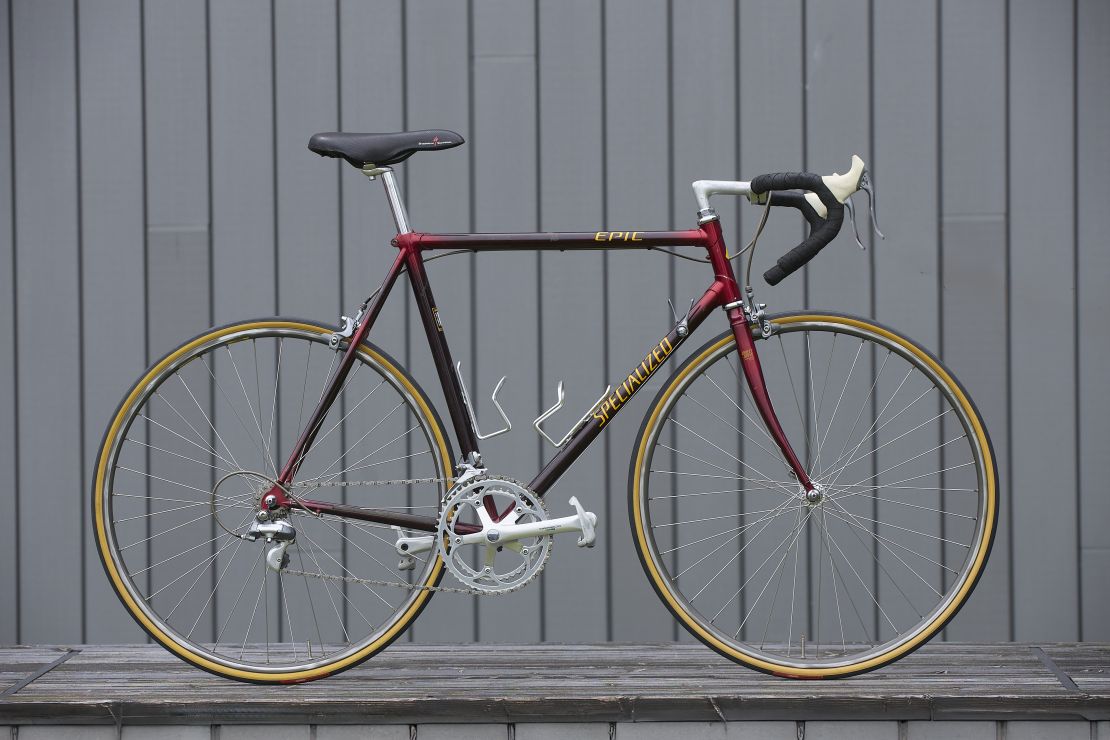
"A 19-tooth largest cog? I'm not used to these gears anymore. Today, the standard is a 30-tooth. Climbing a hill will be a struggle," smiles the 55-year-old as he looks at the Specialized Allez Epic road bike, which he has specially borrowed for the Hilly Stage of L’Etape Czech Republic by Tour de France.
It's a beauty, isn't it?
And it's thirty-six years old! The Allez Epic models began production in 1981 as Specialized's flagship road bike. The first series were made of steel. This model hit the market in 1988. It has carbon tubes, steel dropouts, and a steel fork. For its time, it was a very modern frame. The build features a Shimano 600 set with a seven-speed cassette, but only ranging from 13 to 19 teeth. That will be the biggest challenge.
While this was standard for the 1980s and 1990s, today lighter gears are used. Is this true for your standard bike as well?
Absolutely. The Epic has a 52/42 chainring. On my home bike, I have a 36-tooth chainring and a 30-tooth largest cog on the cassette. It's a huge difference. Over time, I got used to these gears as the number of gears increased. You have many options, and you quickly adapt. As you get older, you don't have the same strength as during your active career.
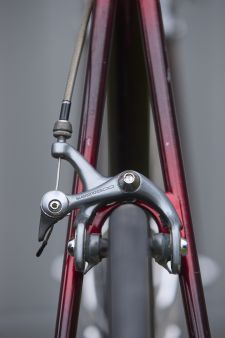

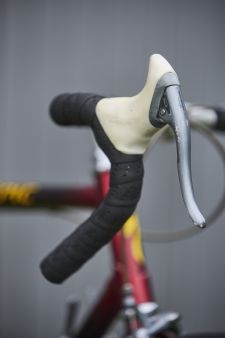
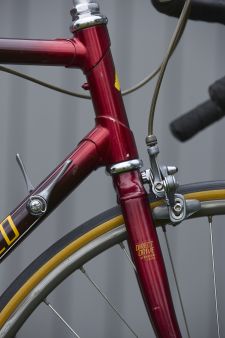
Have you also been affected by the inevitable shift to high cadence pedaling?
It's understandable because it saves energy. Not just uphill, but also in corners. Riding with higher gears is easier, faster, and smoother. A cyclist can use the momentum. I normally ride around 100 RPM, and I try to keep 90 RPM uphill. With the gears on the Epic, that won't be possible. It will be about strength endurance. And climbing will be a battle to even get up.
Do you have a similar model in your own collection?
I'm not a complete collector of these relics. I have given reminders of my active career to various museums or competitions, keeping only the most valuable small items for myself.
Do you remember your first bike that started you on the path to top-level cycling?
My first bike was as a small child, riding around the house. But it wasn't a racing bike like you often see today with small children. I only got such a bike after joining a training center in the older pupils' category. It was a Favorit with steel tubes, a double chainring, and a six-speed cassette. The standard issue at that time.
In the Heroes category, you'll return to frame-mounted shifters.
It's nothing new. In my early days, it was standard. We first encountered Shimano shifting in brake levers while preparing for the 1990 Peace Race during races in America. We discovered there was an alternative to frame-mounted shifting. I remember the early days of shifting were not easy.
Finding the right lever position was an art.
You had to find the right position. The levers, because the spring pulled the cable back. The beginnings weren't easy. A lot depended on feel, experience, smooth pull, and also tightening the derailleur. If it was too tight, the lever wouldn't move. But sometimes the spring tension could cause the lever to drop and the gear to slip. If this happened at full speed, the risk of a fall was high. Once during a sprint training, my gear changed and I went down... Fortunately, the indexed shifting system (SIS) gradually made its way to us, where the lever had predetermined positions.
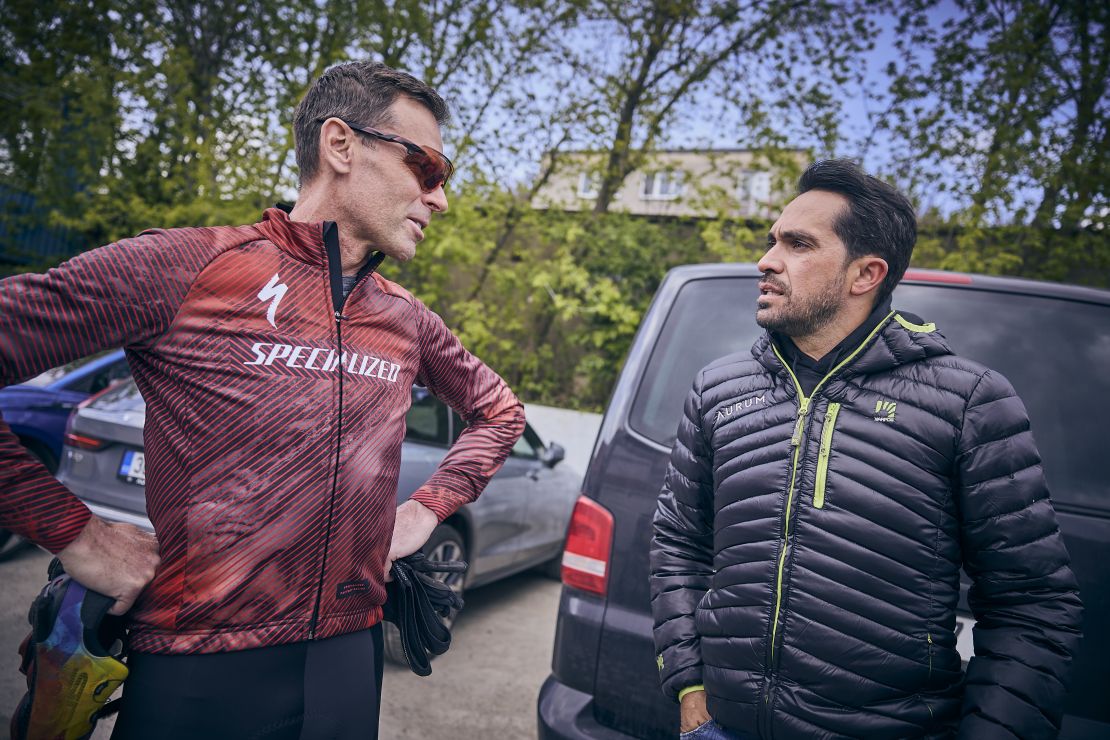
Was it a revolutionary change?
It was definitely a pleasant benefit that helped me win my first Peace Race stages. The finishes were such that you braked from full speed to turn around an island in the opposite direction and then had to accelerate from zero to maximum speed for the sprint, so gear changes at that moment were crucial.
At L’Etape Czech Republic, for safety reasons, the use of modern technologies for securing shoes to the pedals is allowed, but in your early days, you used toe clips, right?
There was no other option. It was standard. The essential part was the type of straps you used. Domestic classic leather ones stretched a lot and didn't hold well. But there were French or Italian-made straps with a layer of plastic between the leather layers. They held great. They also had better buckles, could be shortened, and had better ends for tightening. The problem occurred when there was a mass fall in the peloton.
Even with a quick braking reaction, there was little chance to avoid a crash because your feet were firmly secured?
You had to loosen the strap by hand. Often, I managed to brake and not crash into fallen cyclists, but I didn't have time to loosen the clips, so I fell anyway. Today, you don't worry about this and simply pull your foot out of the pedal. The difference in pedals was also crucial. With today's narrower design, you can start pedaling earlier in corners. With classic metal ones, that wasn't possible.
It must have been unsettling knowing that even if you braked in time, you would still fall.
It was mostly about toppling over from a standstill to the side. But of course, it wasn't pleasant. Often, these situations were amusing.
When you joined the Italian team Lampre after winning the 1990 Peace Race, did you find yourself in a different world in terms of technical and material support?
We got clipless pedals. But I still used toe clips because I would pull my foot out of the clipless pedals. During sprints, the attachment wasn't perfect enough to hold the foot. A slight movement of the heel to the side, and the foot was out. Toe clips with the right straps were better.
Didn't you face ridicule for using the old foot attachment method in the professional world?
Not at all! Everything was subordinated to results, so the whole team tried to create conditions for victory and accommodate me.
At L’Etape Czech Republic, modern helmets are mandatory in all categories, but you experienced a time when riding without head protection was common?
We had head protection in the form of leather straps filled with foam. It was a mandatory accessory from the pupil categories. But we rode training sessions without helmets. Later, in the national team and selected races, I had the option to ride without a helmet, but I never used it.
